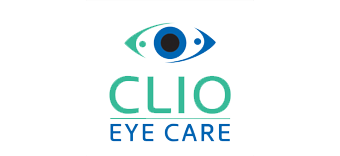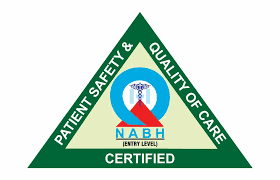PRK (Surface ablation)
Our Services
Quick Consultation
Testimonials
Had a very good experience from the first consultation to the follow-up visits for my LASIK surgery. Dr. Aditi provides good information and details things really well. The staff is helpful and ensures timely reminders wherever needed. Best wishes to keep providing quality care services to their patients.
Types of LASIK Surgery

What happens in a PRK?
During Surface ablation or PRK, as we call it, the superficial layer of the cornea(epithelium), is scraped and the excimer LASER is delivered to reshape the cornea. The raw corneal bed, is covered with a bandage contact lens. The scraped epithelium , grows back and heals in 72 hours, after which the Bandage contat Lens is removed by your doctor on the follow up visit. As the surface is raw, there is discomfort ,in the initial post operative period. Although most patients start seeing well, from the next day, the complete visual recovery and stabilization can take few weeks
Who is a candidate for PRK?
What types of refractive errors does PRK correct?
Custom PRK can treat a full range of refractive errors including your hyperopia (farsightedness), myopia (nearsightedness), and astigmatism (irregular shaped cornea).
Can PRK be detected during a medical examination on slit lamp?
Since there is no flap in PRK, it is not possible to detect it or diagnose on slit lamp examination. In rare cases if there is some residual scar, that can be seen on slit lamp examination. The only way to detect an eye that has undergone PRK is by doing an advanced test called a Corneal Topography. All said, it also depends upon the expertise and experience of the eye surgeon examining you during your medical.
What is the EPICONTOURA Streamlight LASER?
EPICONTOURA is an advanced technique of Surface ablation where the epithelium removal is done with the laser, followed by cornea reshaping with the excimer Laser.
In PRK or EPI-LASEK technique, the superficial layer(epithelium) of cornea is removed manually using alcohol. This can lead to more inflammation, and longer healing times and longer post- operative discomfort.
In EPICONTOURA an intelligent, smart module for transepithelial PRK is used whereby the laser aids in removal of the epithelium followed by the reshaping of the cornea by the customized profile.
Advantage –
Remove the Epithelium with the laser….
No mechanical trauma….
No Alcohol………
Faster healing time….
Less PAIN……. It provides faster surgery for the surgeon and speedier recovery
for the patient avoiding long bare stroma time.
Besides these the potential advantage of Epicontoura is the tracking occurring throughout the procedure, including the epithelial removal and during recontouring.
After performing a thorough eye exam, our LASIK Surgaon at CLIO EYE CARE will sit down and review your case with you, and determine:
Since there is no flap in PRK, it is not possible to detect it or diagnose on slit lamp examination. In rare cases if there is some residual scar, that can be seen on slit lamp examination. The only way to detect an eye that has undergone PRK is by doing an advanced test called a Corneal Topography. All said, it also depends upon the expertise and experience of the eye surgeon examining you during your medical.
FAQs
The following are the important criteria to fulfill before considering for any spectacle removal surgery
- Age above 18 yrs
- Stable prescription for last 1 year
- Overall good Eye Health
These are the broad criteria that must be met before planning for surgery. Of course Physical examination and a thorough assessment by our LASIK surgeon will confirm your suitability for specs removal.
No, the laser procedure itself does not hurt. Anaesthetic drops (Paracaine eye drops) are put in your eyes just prior to taking you inside the OT to numb the eyes. All you need to do is stay calm, lie down on a Table inside the LASIK OT, and follow the Surgeon’s instructions. While undergoing the LASIK, you may feel slight pressure on your eye during the procedure for a few seconds. But there is NO PAIN.
You are advised to stop using contact lenses, at least 5 days prior to procedure.
Put the antibiotic drops advised by the doctor in both eyes 4 times a day one day prior to surgery and once in the morning on day of surgery.
Wash your hair on the day of surgery as you will be advised to avoid head bath for at least 3-5 days after surgery.
Do not use any kind of eye make up or face make up on day of Surgery. Clean your eye lid margins well one day before to remove any kajal or mascara residues.
Do not apply any perfumes or deodorants on the day of surgery.
You can have a normal light breakfast before coming to the hospital for LASIK.
You will be advised to start some eye drops right from the day of surgery. Instill the drops as advised by the doctor. Avoid rubbing your eyes. You can clean your eyes with a sterile cotton swab soaked in boiled water or with sterile lid wipes, making sure you don’t touch the cornea ( black part of your eye ball).
You will be advised to wear dark goggles after the surgery, throughout the day for the first 3 days. After 3 days, you would need to wear the dark glasses only when you go outdoors, you do not need to wear them inside your house. The dark glasses help protect your eyes from dust and also helps to prevent you from touching and rubbing your eyes.
You can have your normal food after laser treatment.
Avoid smoking for at least 2 weeks as the smoke fumes can increase dryness felt in the eyes.
You can start using your phone from the very next day. Desktop, laptop usage can be done from the 3rd day onwards in a graded manner. That means on 3rd day you can spend 2 hrs on the laptop, 4th day 4 hrs, 5th day 5-6 hrs and so on. By 5th Day of Surgery most people are comfortable to resume their routine.
You are advised to avoid driving back home on the day of surgery. Most patients are comfortable to drive by the 5th post operative day. Sometimes, night driving may be a bit difficult during first few days, however the glare settles over next 2 weeks.
For females, you are advised not to use any eye make up for 2 weeks. Threading of eyebrows and eye make up may be done after 2 weeks taking care to avoid too much pressure on the eye.
After LASIK, you would be prescribed eye drops which would need to be put as advised by your doctor. The antibiotic and anti-inflammatory drops are to be put for 3 weeks in a tapering dose and the lubricant drop are continued for a month. Some patients prefer to continue the lubricant for longer period after LASIK.
Yes, LASIK Laser surgery is safe, and is one of the most common eye surgeries done today with highly successful and predictable outcomes. But as in every surgery, there are certain potential risks that you should know about. Although these risks/complications are very rare, they will be discussed with you during your counselling.
Yes. Now with newer advances, and cutting edge technology there are LASIK Platforms that can help to treat Presbyopia. For patients who are above the age of 45years, and wish for spectacle independence for distance and near, we offer SUPRACOR Presbyopic LASIK. Our surgeon will discuss this option with you during your visit.
Our LASIK surgeon is among the first few surgeons in North India who started performing SUPRACOR Presbyopic LASIK.

